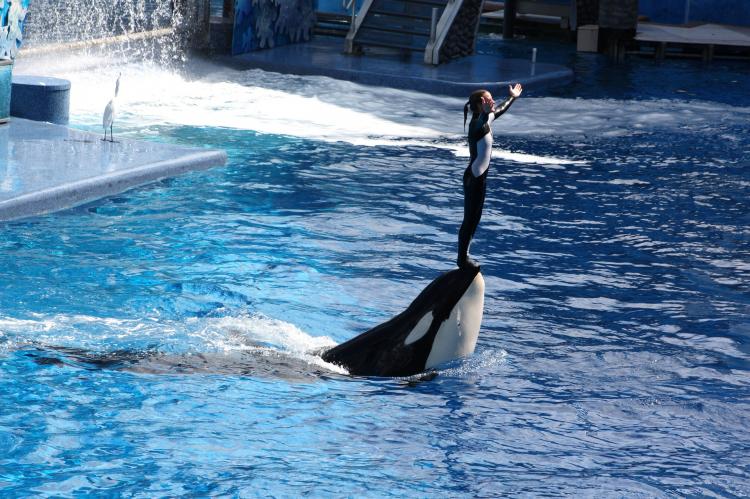China’s demand for captured cetaceans is cause for concern
While Canada has just brought an end to keeping whales and dolphins in captivity, in Russia orcas and beluga whales are still being captured for sale to China where new marine parks and aquariums are opening monthly, with many more large-scale projects set to launch in the coming years.
In China, whale shows are proliferating at new marine parks, driving demand for threatened species. Cities often initiate marine park projects as an eye-catching way of raising their profiles, and offer developers vast tracts of land and cheap loans to build them.
According to the China Cetacean Alliance, which monitors the industry, there are 74 operational ocean theme parks in mainland China featuring whale sharks, belugas, dolphins and manta rays, but no orcas have been displayed publicly up until now. More marine parks are being planned or are already under construction. Both the United States and Canada stopped catching wild orcas in the 1970s due to negative publicity, and more recently, breeding orcas in captivity are either falling out for favour or being outlawed all together.
In Canada
The passing of Bill S-203 will prevent tourist attractions, like Marineland and Vancouver Aquarium, from breeding and acquiring new whales and dolphins. Parks that go against the bill can face a fine up to CAN $200,000. Marineland has more than 4,000 animals, including one orca whale, 58 beluga whales, sea lions and other marine animals. With this bill, Marineland and Vancouver Aquarium would be able to keep their existing cetaceans, but would not be able to breed or acquire new ones. In the
United States
In 2016, SeaWorld announced it was ending its killer-whale-breeding program after years of scrutiny about the theme park company’s treatment of animals. The 2013 documentary Blackfish sparked public outcry over SeaWorld’s treatment of orcas, also known as killer whales, and the theme park has been suffering ever since. The controversial Shamu-style shows are still ongoing in some parks, although SeaWorld has promised to eliminate them entirely by 2019.
Meanwhile in Russia...
In Russia, a legal loophole has been used to catch and export cetaceans to satisfy demand in China’s growing network of ocean theme parks. Photos posted online of a total of 11 orcas and 87 belugas crammed into small enclosures at a secure facility in the Far Eastern town of Nakhodka sparked a global outcry, compelling the Kremlin to intervene, saying the fate of “suffering” animals must be resolved.
Under public pressure, Russian investigators launched two probes into poaching and cruel treatment of the whales, while Russia’s environmental watchdog said it has refused to issue permits to export them. But the investigations and any potential court case could drag on for months.
The Russian government appears to be split between the environment ministry, which says the animals must be released, and the fisheries agency, which defends their capture as part of a legitimate industry. The captured orcas belong to the rarer seal-eating, or transient population of the species, which does not interbreed or interact with fish-eating orcas. The environment ministry has tried to list the seal-eating type as endangered, ministry representative Olga Krever said, adding that the population has only 200 adult animals in Russian waters. Meanwhile, the agriculture ministry, which controls the fisheries agency and oversees unprotected sea species, views orcas as competitors for Russia’s fish stocks and does not believe they are under threat.
872 cetaceans are captive
All 17 killer whales that Russia has exported since 2013—valued at over US$1 million each—have gone to China, according to CITES wildlife trade figures. Since 2014, 872 cetaceans—which includes whales, dolphins and porpoises—have been put into captivity in China, according to the China Cetacean Association.


